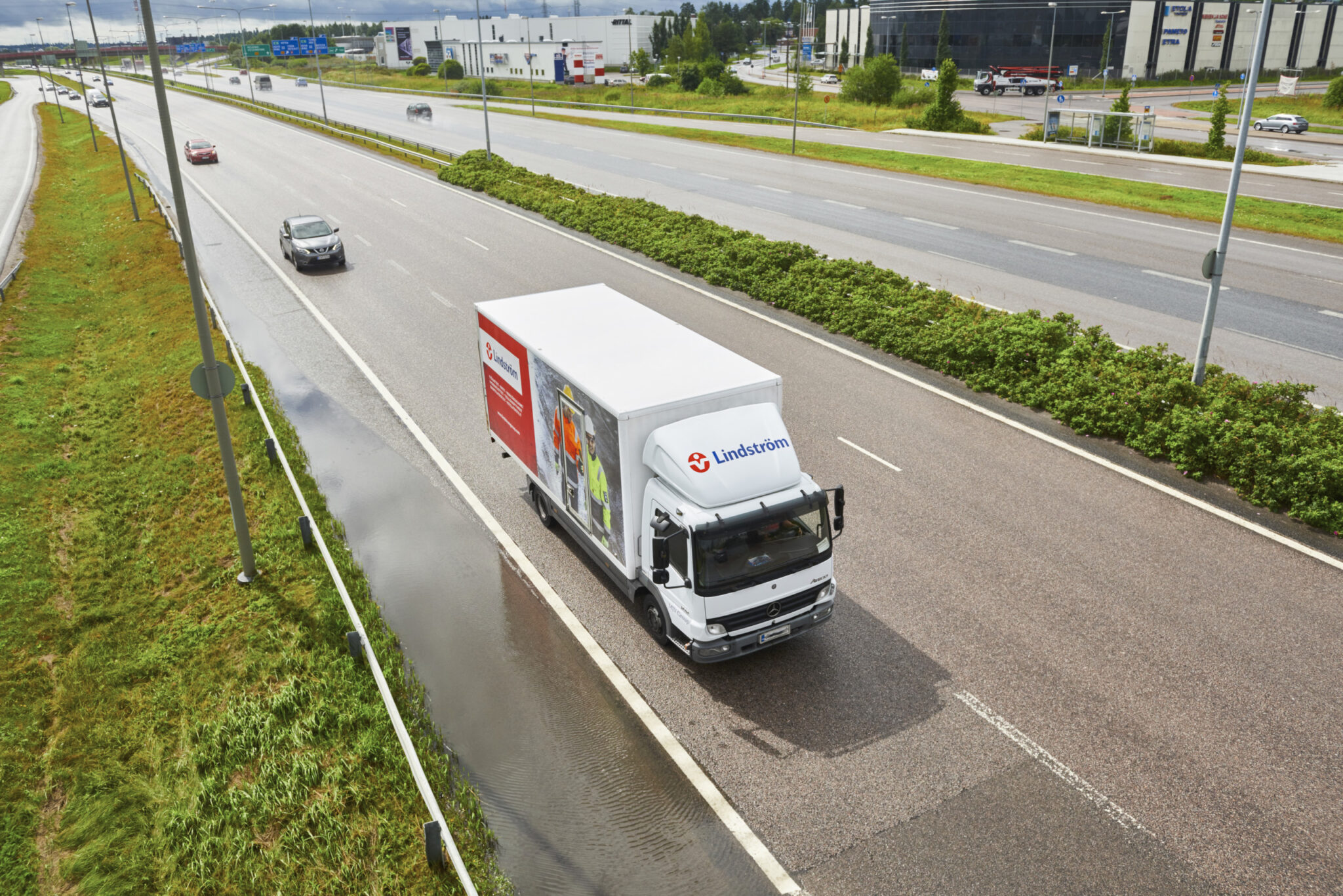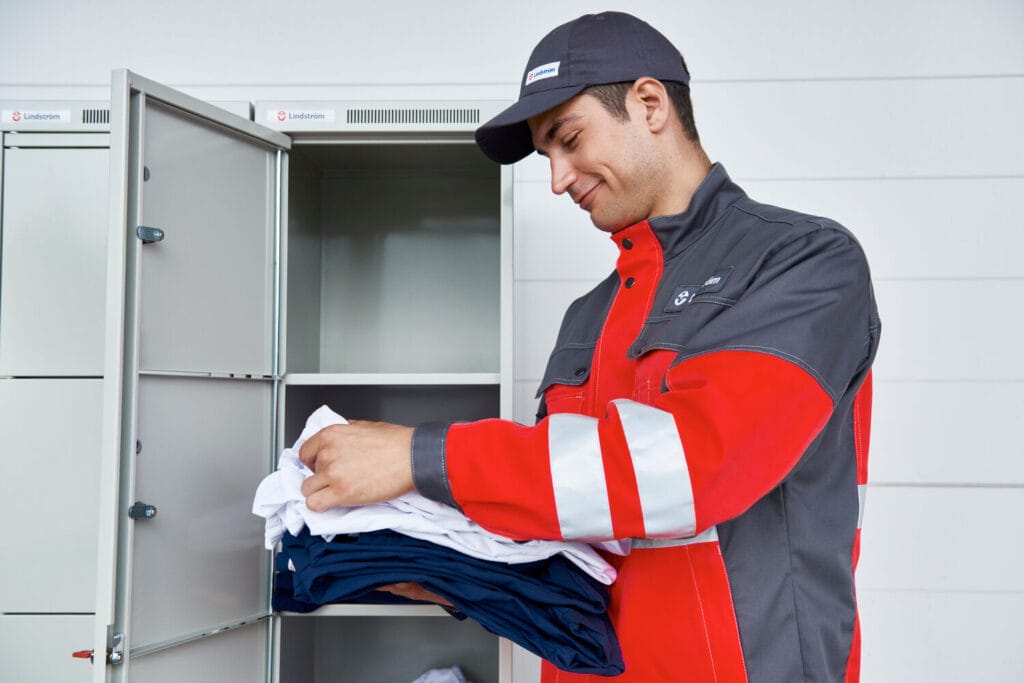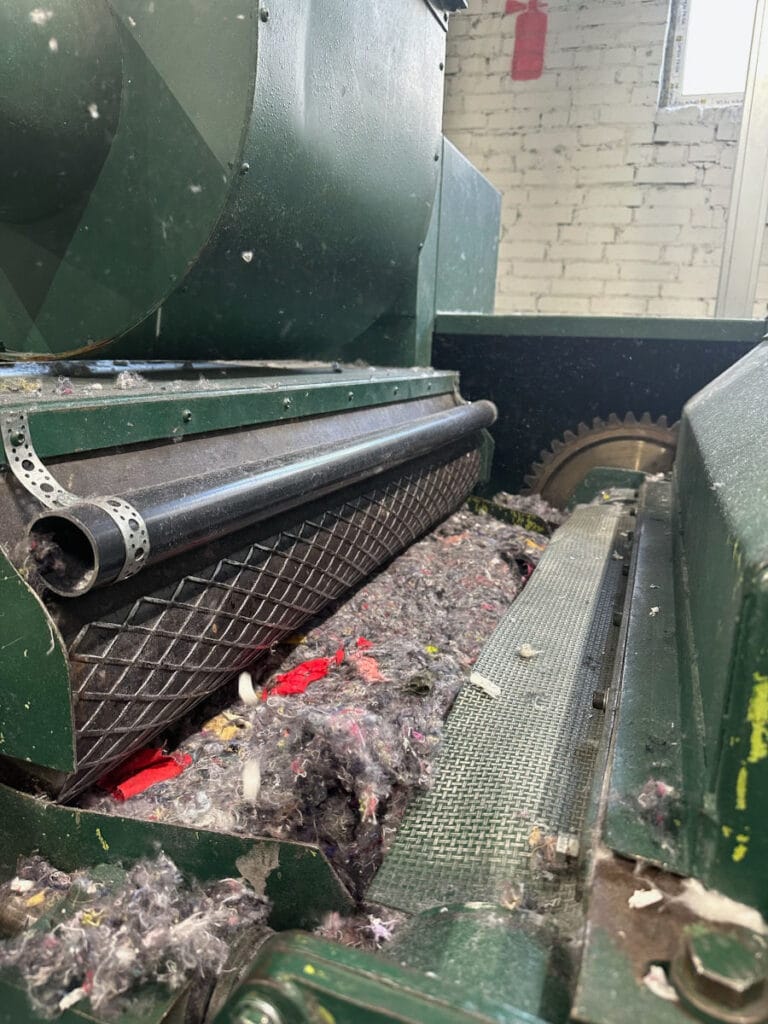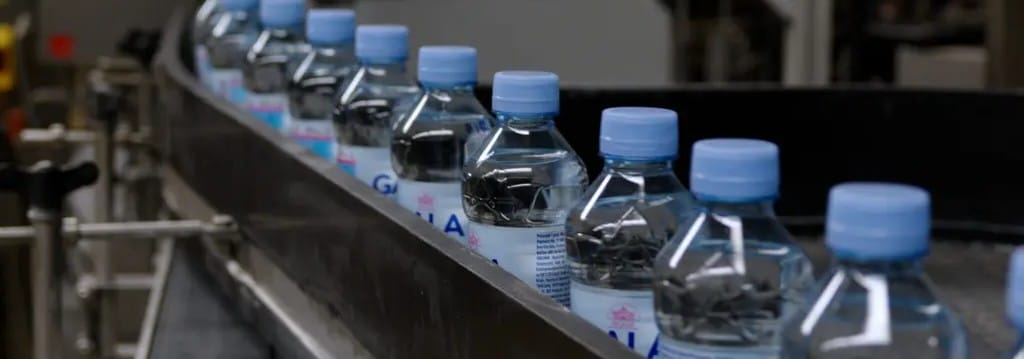
Optimising workwear logistics for efficiency and sustainability
Summary: what you’ll learn from this article
- Why efficient workwear logistics matter for productivity and sustainability
- The biggest challenges of managing textile transport in-house
- How Lindström’s logistics service saves time, money and emissions
- What tracking systems and locker deliveries can do for your business
- How different industries benefit from outsourced workwear logistics
Choosing the right workwear and how it’s managed plays a big role in daily operations. Whether you’re in production at a pharmaceutical company, or in procurement at a food manufacturing facility, clean and safe garments help keep people healthy and your business running smoothly.
Moreover, your workwear logistics – how you gather and transport your textiles – is important for sustainability and your company’s operational efficiency.
Think about what happens to workwear every day: staff collect clean clothes at the start of their shift, wear them throughout the day, and return them to a laundry bin. Then the garments are picked up, washed, checked and sent back, ready for the next day. If you’re managing this cycle in-house, you probably know how much time, effort and fuel it takes.
Why managing workwear logistics in-house may be costing you more
Wasted space and fuel
Often, vans leave half-empty because there aren’t enough textiles to fill them. This wastes fuel, time and labour and increases your transport costs.
Lost productivity
When employees are pulled from their core tasks to manage logistics, it slows down your operations. Time spent moving textiles is time not spent on your business.
Missing garments
Without a proper tracking system, garments can get lost or mishandled. This causes delays, hygiene issues and extra costs, and puts employee safety at risk.
Environmental impact
Frequent textile transport with company vehicles increases emissions and fuel use. This approach often conflicts with your company’s sustainability goals.
If you recognise these inefficiencies and challenges posed by your current workwear transportation setup, you may consider some alternative solutions. This is where we can come in and help.
How Lindström improves your workwear logistics
We optimise delivery routes to transport textiles effectively and affordably. By maximising van capacity and strategically planning routes to serve multiple customers, we minimise unit costs for your company. With this approach, your company also saves on fuel and vehicle maintenance expenses. Our streamlined logistics ensure prompt and efficient garment delivery, minimising disruptions to your business. The end result is an enhanced workflow and higher productivity for your company.
Naturally, we use our own drivers to transport textiles, ensuring that you do not need to give staff the additional work. Moreover, we go beyond conventional delivery methods by providing direct service to employee lockers and washrooms. This further frees up your employees to focus on core operations.
Finally, we place tags on all of our garments so that you can monitor and track where they are at all times. You can also collect data about when the garment was washed, any repairs done and other important bits of information.
With our logistics solution, you can be sure that we handle your workwear logistics needs with speed, accuracy, transparency and reliability.
Smarter logistics for a more sustainable future
When you think about the future of business operations at your company, sustainability is likely an important consideration. We share your concerns. Minimising the impact on the environment is also a core value for us, and at every point in our workwear process, we commit to responsible use of resources.
We optimise delivery loads and routes to minimise the time and resources required for transporting textiles to and from your facilities. This efficiency reduces total fuel consumption. Moreover, by strategically locating laundry facilities closer to customer sites, we minimise transportation distances while ensuring efficient service to our customers. We also use low-emission vehicles.
Looking ahead, we are working toward recycling goals of 100% by 2025, and our aim is to reach net-zero by 2050.
Industry-specific workwear logistics – what we’ve learned
We work hard to improve workwear logistics for a wide range of companies in many sectors. With years of experience serving diverse sectors like manufacturing, healthcare, hospitality, and pharmaceuticals, we bring valuable expertise to each partnership. By understanding the unique challenges of each industry, we deliver tailored solutions that boost efficiency, reliability, and sustainability across the board.
A key part of Lindström’s strategy is to guide customers toward greater sustainability. We do this via easy-to-use textile services that we deliver with passion, care and the human touch. By deepening our industry insights and using digital technologies, we aim to cut our carbon footprint, recycle all end-of-life textiles, and offer transparent, optimised solutions. We focus on streamlining our customer’s processes and helping them strengthen their commitment to sustainability. We believe in long-term bonds and growth as we work to help our customers – spanning 23 countries – thrive in a sustainable way.
Free e-guide to great workwear management solutions
This article is part of a series of content provided by Lindström. Get the full guide to great workwear solutions by donwloading the eguide below.

FAQ – frequently asked questions
What are the benefits of outsourcing workwear logistics?
Outsourcing saves you time, money and space. We take care of transporting, washing and returning your garments efficiently, so your employees can focus on their main tasks instead of managing laundry or logistics.
How does Lindström help reduce textile transportation emissions?
We optimise delivery routes and always fill our vans to capacity to avoid unnecessary trips. Our laundries are located close to customers, and in many of our countries, we use low-emission vehicles reducing both fuel use and carbon footprint.
Can I track garments throughout the laundry process?
Yes. Each garment has its own tag, allowing us to see where it is, when it was last washed, and if any repairs were made. This tracking improves transparency, helps prevent losses and ensures your employees always have clean workwear available.
Do you deliver directly to lockers or employee changing areas?
Yes, we do. Our drivers can deliver clean garments straight to individual lockers or designated changing areas. This saves your staff time and ensures everyone always has access to ready-to-wear, hygienic workwear.
How is Lindström supporting long-term sustainability in logistics?
We are committed to responsible logistics and resource use. We optimise routes, minimise transport distances and use energy-efficient vehicles. Our long-term goals include recycling 100% of textiles by 2025 and achieving net-zero emissions by 2050.





